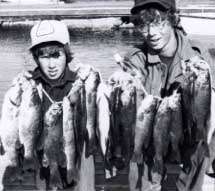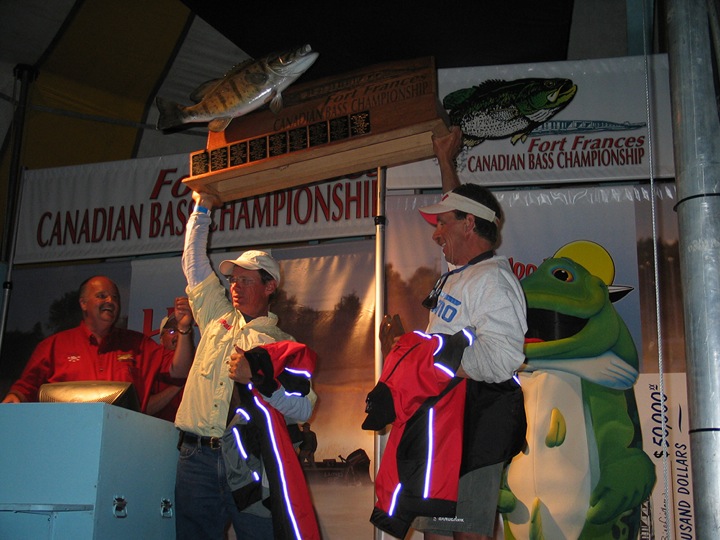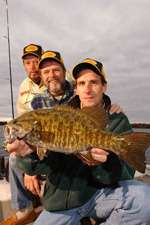
The three of us live a stone’s throw from Lake Mille Lacs and the upper Mississippi River in Minnesota. Both are legendary smallmouth bass fisheries. We also live a mere three-hour drive from the fabled chain of smallmouth bass lakes collectively termed the “Canadian border waters.” In the 44 years we have been fishing and filming outdoor television shows, we have been fortunate to be able to film numerous segments on these waters, as well as on many more key smallmouth bass waterways in North America.
Beyond this, we have also been chasing brown bass on the Great Lakes since early in our careers. Interestingly, we became more exposed to the vagaries of smallmouth bass behavior on these huge sprawling lakes, than in many of our other explorations.
In the process of running PWT (Professional Walleye Trail) events, we repeatedly noticed the amazing bass potential that existed alongside the walleye fisheries. Anglers trolling multiple-line setups for walleyes would, at times, be literally driven off reefs by ravenous hordes of smallies. We witnessed similar behavior inshore, offshore, deep and shallow. It opened our eyes not only to varied seasonal movements, but also the little-understood phenomenon of bass suspension.
However, it’s only in the last decade or so that increasingly monstrous size averages of smallmouth bass have indicated that something special has happened and is happening to the fish and fishery.
I can vividly remember when a 4 1/4-pound smallie would capture many a big-fish award. All of a sudden, it began taking a 5 pounder, then a 6 pounder and so on. We came to see 5-fish day limits jump from 16 pounds to 20 … to 24 … and even 26 pounds! Strikingly, this seemed to be taking place, more or less, across the continent and not isolated to any particular region. This suggests a major shift in environmental factors.
In essence, during the last decade or so, the smallmouth bass fishery of the North American continent experienced what can only be called a quantum shift in overall size, population and niche. It’s probably easiest to distill what happened into the combined effect of the following factors, regardless of region or latitude:

- The accumulated impact of years of slot limits and the catch-and-release ethic;
- The introduction of invasive species (e.g., zebra and quagga mussels);
- The introduction of invasive prey species (e.g., smelt, gobies and rusty crayfish);
- Shifting environmental conditions that negatively impacted competing predators, but favored smallmouth bass;
- The accumulated effects of clean water standards;
- The geographic expansion of smallmouth bass by stocking into waters that now reach from Canada nearly to Mexico; and
- Very importantly, a generalized longer growing season across North America that has prevailed for more than a decade, adding as much as three weeks or more to the open-water or growing seasons. Whether it’s due to global warming or a naturally-occurring temperature cycle, the end result is that bass have experienced longer summers and shorter winters, spurring their feeding and growth.
In future articles we will explore the ramifications these factors have on today’s smallmouth bass fishery. And more importantly how you can use all this information to catch more and bigger fish
Editor’s Note: To learn more about what Al, James and Ron Lindner are doing, go to their web site. There you can find a complete schedule of where their television show plays plus a list of their award-winning DVD’s. You can also follow Ron on Ron Lindner Facebook and Angling Edge Facebook.





